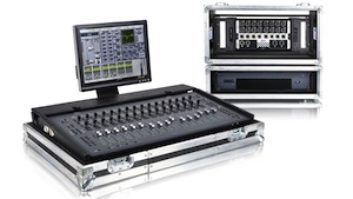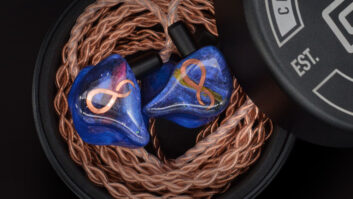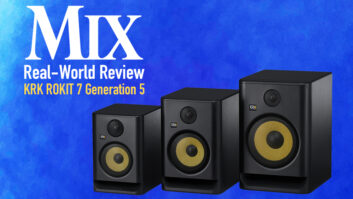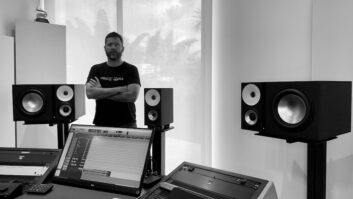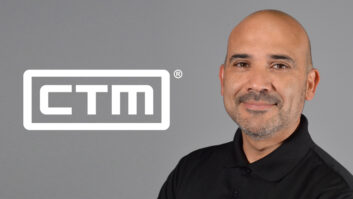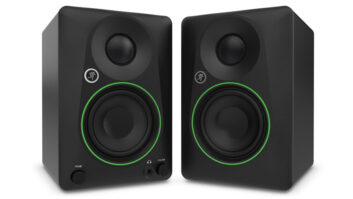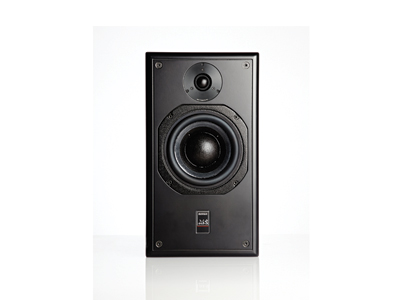
Acoustic Transducer Company is a UK company known for its high-end professional and consumer hi-fi audio reproduction systems. The company’s products include preamps, amps and monitors, both active and passive. The U.S. distributor is TransAudio Group out of Las Vegas.
Since my move to Nashville, I’ve been using ATCs every day in my work at The Blackbird Academy. Six of the nine rooms at companion Blackbird Studio have soffit or stand mounted SCM300ASL Pros and SCM150ASL Pro monitors for stereo and surround playback. Over the years I’ve been in many rooms with installed monitors, and there are only a few I’ve heard that I’d consider “usable” in everyday work. The big ATCs are at or near the top of this list.
The SCM20PSL passive monitors tested here feature sealed wood cabinets finished in ATC ‘Pro-Black’ and measuring 17.3×9.9×11.9 inches (WxHxD), and weighing 44 pounds each. They fit well into the close-field category, perfect for meter-bridge or stand mounting. The cabinet is sturdy and bare bones with no integrated mounts. However, should you want to put them on a wall, the speakers can be modified to work with the K&M 24120 mount, available as an option.
The components comprise ATC’s own 6.5-inch bass/midrange driver using a 3-inch voice coil, and ATC’s first go at designing its own tweeter: the SH-25-76S, a 1-inch soft-dome developed by ATC’s Billy Woodman and Richard Newman after six years of R&D. The crossover is a 2.8kHz internal, second-order, passive design, and the boxes output 108 dB of maximum continuous SPL. While not blistering, for a sealed cabinet they are plenty loud for tracking and mixing.
Din and Juice
A poorly amped passive monitor will spit, and splatter, so I wanted to be sure I had plenty of clean power. For this review I used the new Moon 3300A power amp from SimAudio, a stereo version of the company’s Neo 400M monoblock amplifier. The Moon 3300A amp offers 125 watts per channel at 8Ω, and 250 at 4Ω, with maximum output at 40 volts. The SCM20PSLs are rated at 8 ohms and call for 75 to 300 watts. Although the 3300A falls near the middle of the required power range, the over-engineered power supply offers plenty of headroom for hot, repetitive transients and other power-sapping source material. Signal to noise is 100 dB at full power, and on the bench, the THD between 20 Hz to 20 kHz at 1 watt is < 0.02%, and a very respectable < 0.05% at 100 watts. The SCM20PSLs can be bi-amped, but because I didn’t have two 3300As or something else I trusted, I chose not to.
I broke in the ATC SCM20PSLs overnight to give them a chance to open up. In my experience, this process takes more time than you’d think, so I’m always willing to be kind on the first listen. As I usually expect with brand new speakers, on the first day, the ATCs were unimpressive in the low end, sounding very light in the bass range—the low end was just not responsive.
I had them on a couple of tracking and mixing sessions and switched back and forth between Genelec 1030As and ProAc Studio 100 passives powered by a Crown Reference 1 power amp. The ProAc monitors are a very popular speaker here in Nashville for good reason: They’re reasonably priced and sound great. At this stage, the ProAcs embarrassed the SCM20PSLs. While the ATCs were more open in the critical vocal range than the ProAcs, the low-end and punch on the ProAcs was excellent, due to the ProAcs’ front port. It made me wish I could get that low-end extension in the ATCs, which would make them nearly perfect to my ears.
Not Lost in Translation
For fun, and to hear how the SCM20PSLs stood up to their (much) bigger brother, I A/B’d the passives against the wall-mounted ATC SCM300ASL monitors in Blackbird’s Studio A. At this point, the bottom end still hadn’t flowered on the passives (…wait for it), but I wanted to hear the differences in the midrange and high frequencies.
The translation between the two ATCs was very interesting. Of course, the low end was much more prominent in the larger speakers, but the mid- and high frequencies carried the same signature openness and smooth brightness that brought the vocal forward more in the mix. You could hear the lineage between the two. When I switched to the ProAcs, the blend changed more drastically. The vocal closed down on the ProAcs, but the bottom opened up, whereas the opposite happened when I switched between the two ATCs, which were very consistent with each other in the critical “money” range.
At this point in the review process, I parked the passives with the Moon amp upstairs in Blackbird’s Studio I. Clients and weekend projects had access to the speakers for over a month. I have no idea how long, or hard, they were ridden but time revealed the booty.
Listening during my most recent tracking dates over two days was a treat. The bottom end was open, punchy and beautiful. The kick drum, which was recorded with an AKG D12VR inside and the new Neumann reissue of the U47 FET on the outside, offered plenty of punch and good presence at the bottom end with natural sounding definition from the beater. Without additional EQ (other than the AKG’s onboard filters), this combo was killer. The bass, recorded through an Acme Audio Wolf Box III DI, paired with an RE20 on an Ampeg B15 amp, was great. In this instance, both channels were sent through an Empirical Labs Fatso Jr. for some extra mojo. Both channels of the Fatso were set to “Tracking,” a combo of the G.P. and Buss Compressor settings, at a 4:1 ratio. The Tranny button was on and Warmth was set to 4, giving the bass a vibe that is hard to beat at the bottom of a mix.
Vocals, recorded through a Neumann U47 and an AKG 414 Combo mic through a Shadow Hills and Sonic Farm 500 Series preamp sounded great, yielding plenty of natural-sounding presence without being too bright or sibilant. Electric guitars through a variety of amps miked with a U87 and Royer 121 were perfectly edgy and in your face. The range of instruments, from shaker and cymbals at the top to bass and kick drum at the bottom, sounded convincingly real and was enticingly easy to listen to.
Always Convincing
These speakers grew on me. The low end was very stiff until I pushed the speakers for more than 40 hours. Once the woofer relaxed, the bottom end bloomed, and the speakers seemed to get better each time I heard them.
At Blackbird, I listen to ATC SCM300ASL Pro loudspeakers every day. I’ve sat in on many sessions where engineers use the mains all day, a rarity in my experience. The passives carry a very similar sonic signature, minus the lower-octave extension that soffit-mount speakers carry.
The SCM20PSLs are punchy, smooth in the top end, and easy to listen to across the frequency range. If these were mine, I’d add a sub, but they still work well without. If these monitors fit your budget and you’ve got a great power amp, they are an excellent choice for a great close-field listening experience.
Kevin Becka is Mix’s technical editor.
Product Summary
COMPANY: Acoustic Transducer Company (ATC)
PRODUCT: SCM20PSL
WEBSITES: atcloudspeakers.co.uk, www.transaudiogroup.com/atc.shtml
PRICE: $3,149/pair
PROS: Passives align well with ATC legacy professional loudspeakers.
CONS: Woofers took some time to relax; price may be out of reach for some.

